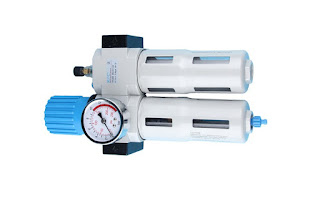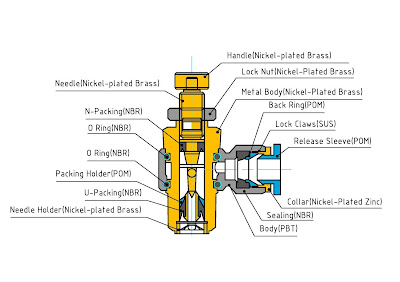Modular FRL is also called air preparation unit, which is divided with air filter, air lubricator and air regulator(pressure reducer, because they only can reduce the air pressure and can not boost more pressure ). The three units can be use separately or make a combination to use. For examples, air filter+air regulator = filter regulator, air filter+air regulator+air lubricator = three combination or two combination. Modular FRLs play important role for pneumatic components and air tools.
Air filter can remove dust and water from compressed air
Air lubricator can lubricate the components with air.
Air regulator can get stable air supply and the pressure you want.
For detailed specification and model, please check
www.xpneumatic.com/pneumatic-components/air-preparation/
Advantage
The element and the bowl are in one piece. Replacement can be done with simple tool.
Reduced required maintenance space: Max. 46% reduction
Better visibility & safer
All kinds of combination as you request
How to Use and Maintain
Use the right level of filtration, regular filtration is 5um, 20um, 30um, 40um
2. Before installing, please check whether it is damaged or broken during transport and whether any parts are loose.
3. Please install as arrow direction and keep the unit vertical.
4. For units with protection cover, please make sure covers are fixed before use to avoid the danger.
5. For pressure regulator or regular filter, please turn hand wheel to zero position, and then install pressure gauge. Let air go in and turn the wheel to a proper pressure.
6. For lubricator, it is required to adjusted the oil needle to zero position and add the oil below level line.
7. Please remove metal chips, dusts and oils stains in the tubes if you use metal tubes to connect.
8. PC transparent cup of the filter, lubricator are made of PC plastic material, no synthetic oil, organic solvent, chemical, cutting oil, volatile gas are allowed. In order to avoid destruction of material and affect safety of applications.
9.Use spanner to tighten the pressure meter while installing, never tighten with your hand.
10. Attached is the torque table below while tighten the connector, never exceed the range to avoid damage of device.
Danger
2. Never use in operation which rise obvious "Danger" and safety concern to human life and body.
3.Confirmation of safety shall avoid the following conditions which cause safety impact to human and damage of equipment.
Warning
In outdoor dusty condition
Avoid chemicals, corrosive and inflammable gas; avoid sea water, high temperature place in surrounding
Exceed the condition in the specification of the product
In the place tend to receive rigorous shock impact, which affect the quality and stability of the products
2. Please do not make any modification or disassemble to the structure, Function of the product
3. Shut off the power switch and sir source properly before service and maintenance, avoid consequent hazard and damage of product.
4.Avoid consequent hazard and damage of product which assembling and operation.
Caution
2. Caution for strainer of filter
The pressure differential type strainer use only for pressure above 1.5 bar
Automatic float ball strainer use only for pressure above 1 bar
Care for the cleanliness of air and PC cups, avoid clogged by debris and dirt cause poor function of the strainer and leak
If you have any technique question,
Please contact us sales@xhnotion.com



Comments
Post a Comment